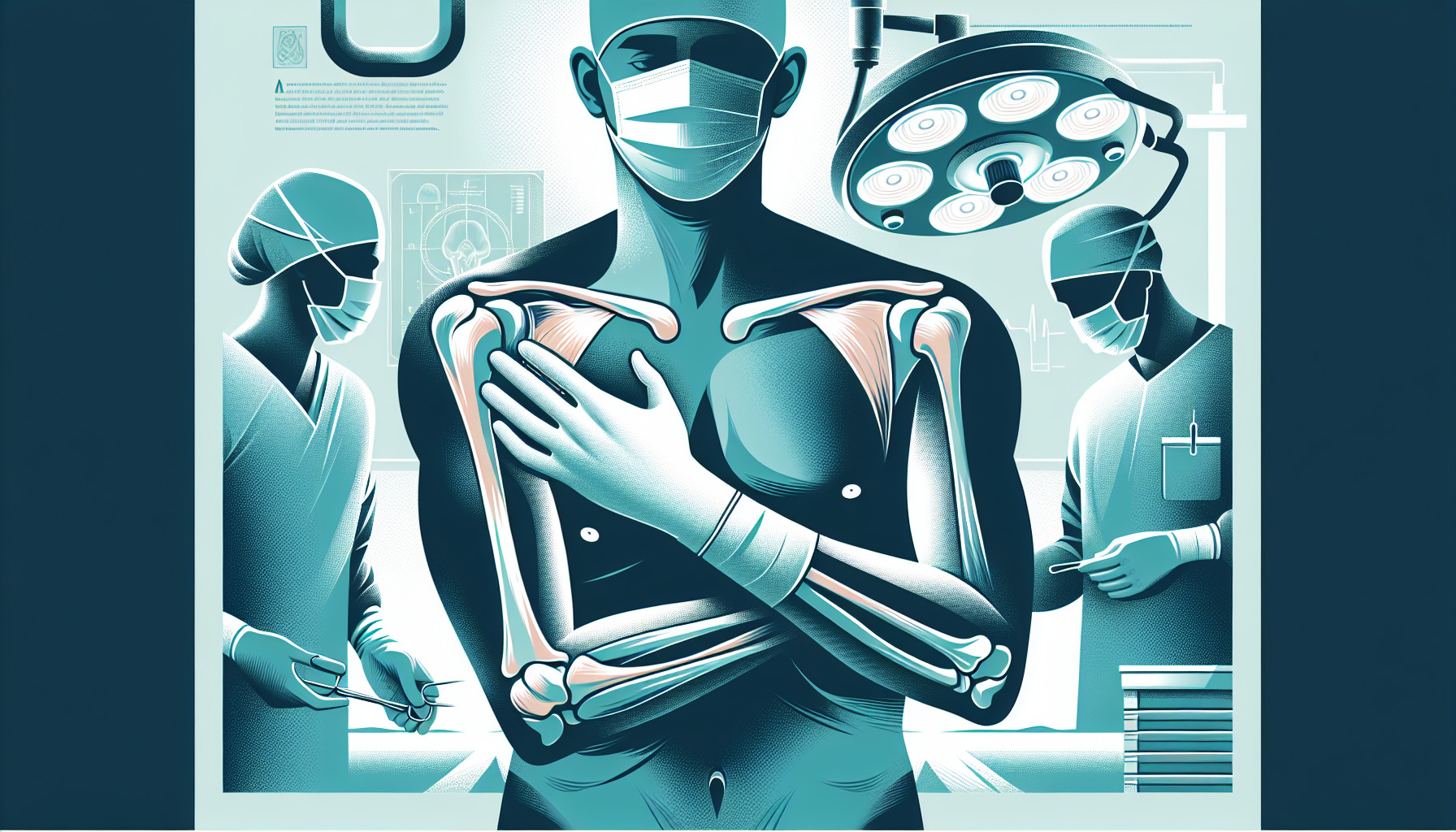Our Summary
This research paper examines the serious issue of joint infection in the shoulder after a shoulder replacement surgery. The paper looks at the most recent ways to diagnose these infections, paying particular attention to the most common bacteria that causes them, called Cutibacterium acnes. The paper also discusses various treatment methods for these infections, which include antibiotics, different types of surgery, and how to handle surprise positive test results during revision surgery. The paper emphasizes that surgeons need to be well-versed in how to rebuild bone and soft tissue after removing an infected shoulder replacement.
FAQs
- What is a Periprosthetic Joint Infection (PJI) of the shoulder?
- What are the treatment strategies for PJI of the shoulder?
- What are the reconstructive options after the removal of an infected shoulder prosthesis?
Doctor’s Tip
One helpful tip a doctor might tell a patient about shoulder replacement is to closely follow the post-operative care instructions provided by their healthcare team. This may include proper wound care, physical therapy exercises, and taking prescribed medications as directed. It is important to attend all follow-up appointments and communicate any concerns or changes in symptoms to your healthcare provider promptly. Following these guidelines can help ensure a successful recovery and reduce the risk of complications, such as infection.
Suitable For
Patients who are typically recommended for shoulder replacement surgery include those with severe arthritis or joint damage that causes chronic pain and limited function in the shoulder joint. This includes patients with osteoarthritis, rheumatoid arthritis, post-traumatic arthritis, avascular necrosis, and rotator cuff tear arthropathy. Other candidates for shoulder replacement may include individuals with failed previous shoulder surgeries, such as shoulder arthroplasty or shoulder fracture fixation, or those with severe shoulder fractures that cannot be successfully treated with other methods. Additionally, patients who have not responded to conservative treatments such as physical therapy, medications, and injections may also be considered for shoulder replacement surgery.
Timeline
Before shoulder replacement:
- Patient experiences chronic shoulder pain, stiffness, and limited range of motion
- Consultation with an orthopedic surgeon to discuss treatment options
- Preoperative evaluation and preparation for surgery, including imaging studies and medical clearance
- Decision-making process regarding type of shoulder replacement (total shoulder arthroplasty, reverse total shoulder arthroplasty, etc.)
After shoulder replacement:
- Surgery is performed, typically requiring a hospital stay of 1-2 days
- Postoperative pain management and rehabilitation program to regain strength and mobility
- Follow-up appointments with the surgeon to monitor progress and address any complications
- Return to normal activities and improved quality of life with reduced pain and increased shoulder function
- Long-term follow-up to monitor for complications such as periprosthetic joint infection (PJI) and potential need for revision surgery.
What to Ask Your Doctor
Some questions a patient should ask their doctor about shoulder replacement and potential periprosthetic joint infection include:
- What are the signs and symptoms of periprosthetic joint infection following shoulder replacement surgery?
- How is periprosthetic joint infection diagnosed in the shoulder, and what specific tests or criteria are used?
- What are the most common causative organisms for periprosthetic joint infection in the shoulder, including Cutibacterium acnes?
- What treatment options are available for periprosthetic joint infection in the shoulder, including antibiotic therapy and surgical interventions?
- What are the potential complications or risks associated with treating periprosthetic joint infection in the shoulder?
- How will unexpected positive cultures in revision arthroplasty be managed?
- What bony and soft-tissue reconstructive options are available following explantation of an infected shoulder prosthesis?
- What is the expected recovery and rehabilitation process following treatment for periprosthetic joint infection in the shoulder?
- Are there any specific lifestyle changes or precautions that should be taken to reduce the risk of periprosthetic joint infection in the shoulder in the future?
- How often should follow-up appointments be scheduled to monitor the shoulder replacement and check for any signs of infection?
Reference
Authors: Brochin RL, Schiffman CJ, Hsu JE, Quigley RJ, Garrigues GE, Kohan EM, Namdari S, Ricchetti ET. Journal: Instr Course Lect. 2022;71:361-376. PMID: 35254794
